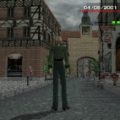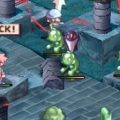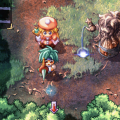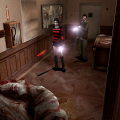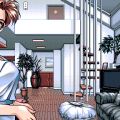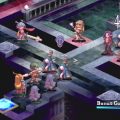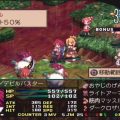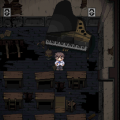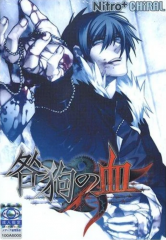
Japanese cover
Explicit boys’ love visual novels available in English are… eclectic, to say the least. The most popular and easily accessible ones tend to not simply have a cast of adult men who you date and then have sex with, the way you’d expect a vanilla eroge to play out.
The options are getting better, especially among indie developers, but aside from the extraordinary Coming Out on Top and a small handful of others, by and large you either have the “I swear to Christ all the characters are eighteen” games like Absolute Obedience and Camp Buddy or you have kinky, grotesque work like Nitro+Chiral’s output.
Nitro+Chiral is undoubtedly the biggest name in BL visual novels, and not without reason. While it tackles niche and transgressive subjects, the company puts a lot of effort into its work by crafting inventive settings, twisty plots, and complex characters all within a very polished visual novel engine.
 An offshoot of NITRO PLUS (infamous for its lolicon horror thriller Saya no Uta), Nitro+Chiral was formed in 2004 to carry on its parent company’s dark output in the BL sphere. Its first release, Togainu no Chi (literally “Blood of the Reprimanded Dog”), came out a year later.
An offshoot of NITRO PLUS (infamous for its lolicon horror thriller Saya no Uta), Nitro+Chiral was formed in 2004 to carry on its parent company’s dark output in the BL sphere. Its first release, Togainu no Chi (literally “Blood of the Reprimanded Dog”), came out a year later.
Togainu didn’t legally make it to English-speaking audiences until 2020, however. Its journey to the west began July 4, 2018, when the adult visual novel purveyor JAST USA announced JAST BLUE, a line focusing on BL games. Blue went on to localize three Nitro+Chiral games starting with Sweet Poolin 2018, then Togainu no Chi(with the new subtitle Lost Blood) in 2020, and finally DRAMAtical Murder in 2021.
Togainu no Chi takes place in a post-apocalyptic Japan. The country has been split into two competing factions after a devastating third world war – called the Third Division in-game – while the ruins of old Tokyo, now called Toshima, sit in the middle held by a criminal organization and drug cartel called Vischio.
Toshima has been turned into an enormous battleground for a game called “Igura,” a Battle Royale-style competition where men fight to the death collecting each other’s dog tags, which serve as currency. If someone collects a certain set of tags, they have the chance to fight the strongest person in the competition – a man known only as “Il Re.” If the challenger wins, he takes over Vischio.

The story kicks off when a street punk champion in a game called “Bl@ster” (essentially organized street fights) named Akira is arrested for a murder he didn’t commit. He’s recruited by shadowy individuals and made to participate in Igura to take out “Il Re” in exchange for his freedom.
The plot soon centers on a drug running rampant throughout Toshima called “Rein” (Sometimes translated as “Line”), which turns its users into bloodthirsty, ultra-violent expert killers – who, because it’s a Nitro+Chiral game, also happen to be extremely horny and gay.
The battle competition setup soon takes backseat to character-fueled plots, which involve human experimentation, amnesiac orphans, insatiable bloodlust, conspiracies, and tons and tons of carnage.
Characters
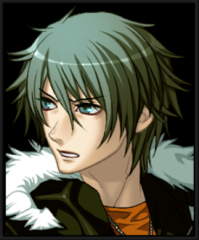
Akira
A calm and unemotional street punk, almost a dead ringer for Squall from Final Fantasy VIIIin both style and personality. A bit lacking as a main character, a common flaw among visual novel protagonists since his characterization needs to be broad enough for the changes he undergoes in each route to make sense.
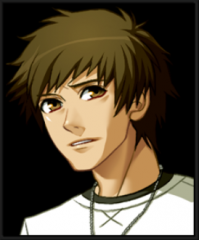
Keisuke
The boy next door. Keisuke grew up with Akira on the streets and clings to him despite Akira’s indifference. His design is the least interesting by far, but his path feels like it’s the most “canon” of the three initial love interests.
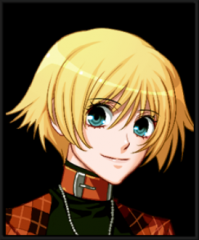
Rin
A free spirited boy with a dark past and a vengeful streak. He’s surprisingly casual about participating in Igura and is far more powerful than his slight build would suggest. The only “uke” option in the game. Enjoys photography.
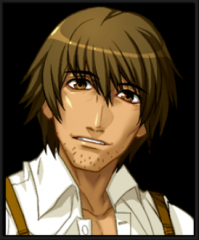
Motomi
An information broker who helps out Akira and the gang. His path probably balances character development and plot progression the best of any of them. The least complicated and most consensual romance in the game. Also has a dark past.
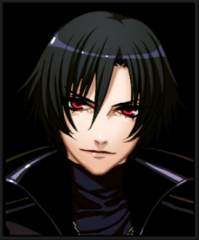
Shiki
A ruthless killer, feared among Igura participants. Known to murder people indiscriminately, fast, and without warning. He has a weird fixation on Akira and refuses to kill him. Shiki has a considerable following in the fandom despite basically being Anime Hitler.
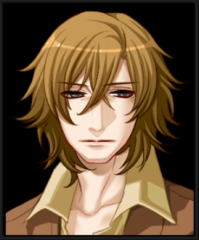
Nano
Another mysterious figure, though probably the most mysterious of all. Nano wanders blank-eyed and emotionless through Toshima doling out a supply of Rein. The reasons for how and why he came to carry the drug end up being critical to the overarching plot.
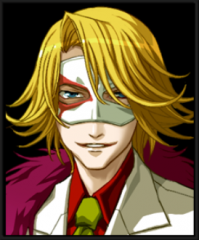
Arbitro
The head of Vishio and the organizer of Iguro. A sadist who kidnaps boys to torture and experiment on. Not a guy you want to hang around for too long.
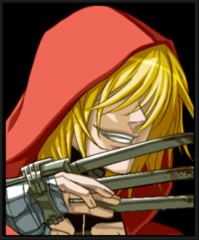
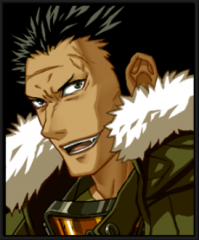
Gunji and Kiriwar
The Executioners, two elite killers hired by Vishio to punish people who break the rules in Igura, though they often just kill anyone with the ill fortune to run into them regardless.
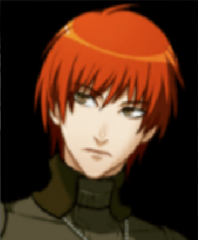
Yukihito
A character who only appears in the PS2 and PSP versions of the game. An orphan with a dark past much like Akira. He likes to draw.
The game explores a “hurt people hurt people” theme, as well as more general topics like addiction, free will, and the appeal of violence. It questions whether the pain that has been inflicted on us justifies the terrible things we do to each other in our worst moments. The politics of the dystopian setting aren’t explored much, mostly serving as a backdrop and a means to make the characters as savage, desperate, and violent as possible.
“Although Togainu was a pretty dark tale,” scenario writer Fuchii Kaburaat explains in an Easter egg postscript that appears after you complete all the routes, “at its core, it’s still about love and passion, about how strong emotions can shift from one moment to the next, and how that can lead to depraved actions, or actions we later regret.”
Though a foundational, important gay visual novel, Togainuis not great if you’re looking for queer representation. It comes from a very “ogling at boys” angle – which is great and all, but it’s limited and stereotypical of yaoi. For example, the writing is insistent on every character saying “I’m not gay, I’m just attracted to you!” and uninterested in ever challenging that perception. Everyone has to start their romantic feelings with “But he’s a guy!” which gets old fast.

The story’s pacing also leaves something to be desired. Scene after scene of life-or-death fights drains them of tension. You can only have so many dramatic blade-clashings and keep the stakes up. And, side complaint that’s inherent in most anime, but it is a funny demand upon one’s suspension of disbelief to have these slender little bishounens apparently be the toughest fighters in the world.
Still, there’s something to appreciate in the shear amount of story and detail in Togainu. Each route takes hours to complete, even if you skip the scenes that overlap between routes, and they tend to go in wildly different directions.
Every path deals with Akira and the love interest trying to kill each other at least once. This makes more sense in some scenarios than others. The bad endings are all very disturbing, usually involving rape and even guro. Keisuke’s bad endings are especially explicit, while Shiki’s – even his “good” ending – are the darkest.
The writing is definitely to be commended for its complexity, but unfortunately, as often as not, it’s unable to fully grapple with the difficult subjects it takes on. Suffice to say, depictions of rape and sexual violence are fairly common in the game. One of the first sequences involves an off-screen description of necrophilia. And descriptions of how Arbitro’s “dog” came to be must be seen to be believed.
Whether or not such depictions should exist is less relevant than what the game does with them, and unfortunately it is not up to the task of reckoning with the psychological trauma inflicted on these characters. To its credit, it tries. But it ignores the mental toll of sexual violence just as often. Like, both Akira and Keisuke go through immense suffering in Keisuke’s path, and the failure to address it cheapens the experience of the happy ending.

The same deal occurs in the Shiki path, where dub-con and non-con scenes abound. This wouldn’t be as big a deal if this was more porn than dystopian thriller, but there was clearly a lot of energy put into having a deep setting and characters arcs, and that effort feels betrayed when the writing follows porn logic instead of keeping its character motivations and world building consistent. The Shiki endings feel like slave/master hurt/comfort fantasies more than a coherent narrative, and that can be distracting and, frankly, boring to someone who isn’t playing the game to jerk off. One of the endings also features heavy Nazi overtones, and it’s weird to think there is a “good ending” with someone who would otherwise become the supreme fascist dictator of Japan.
The Motomi and Rin paths, on the other hand, while more vanilla, make more sense, offer rich and nuanced dynamics between Akira and the love interest, and are full of effective gut-punch emotions. The Motomi path in particular probably has the strongest character moments while still adding a lot of background detail to the world, despite how Motomi feels like an ancillary choice in the grand scheme of the game. Rin, meanwhile, is a mostly standalone path that works well for a first playthrough, though some may be put off by his youthful appearance.
Since it’s the last one to be unlocked, Nano’s route, while technically the “true” path, can feel like a letdown – it slows the pacing when the player is likely itching to complete the game, and most of the big reveals have already been shown in other routes, so there are few surprises left to maintain engagement.
Sex scenes are fraught and uncomfortable, which can be appealing if you’re into that, but again it’s difficult to say sometimes what they contribute to the game beyond getting your sadomasochistic fujoshi rocks off. Some scenes complement the game’s central themes exploring the conflict and affinity between pain and pleasure. But more often than not the sex is less about a theme and more about throwing around yaoi tropes.
Tatana Kana’s art, for the most part, is pretty good if not outstanding. There is some questionable anatomy that predominantly shows through in the sex scenes, where the characters look too angular and mangy. Little attention seems to have been paid to the designs of the minor characters too. Most look flat and boring, almost like quick sketches.

The music is reminiscent of Shoji Meguro’s work on the Persona series – a sort of hip-hop inflected goth vibe that slides between chill lo-fi beats when things are calm to thrashing punk power chords when it’s battle time. Most tracks are about two minutes long and repetitive, the kind of music made to establish a mood and then let you tune out. The composer was Hideki Sakakibara – stylized as HIDEKI – who also composed tracks for Nitro+Chiral’s later game DRAMAtical Murder.
As with a lot of visual novels, the full story only becomes clear after going through every path. The Shiki and Nano paths open up after completing the others, and you’re treated to a post-credits sequence once you unlock all the endings. Liner notes also appear after fully completing the game. A button appears on the title screen, which takes you to a web page with comments from the developers. They range from sincere comments about the game and their time spent working on it to silly one-liners.
Altogether, despite how ground-breaking it was in the BL scene, Togainuis still a game to be recommended only to players who know what they’re getting into and, once they’re made aware of all the blood and rape, decide they are cool with that. Nitro+CHiRAL games aren’t for everyone for good reason. To its credit, the game is upfront about what it depicts, to the point where it feels like it’s beside the point to criticize the freaky gory yaoi rape game for being a freaky gory yaoi rape game. But there is a line between nonsensical porn tropes and erotic narrative that it doesn’t always know how to tow.
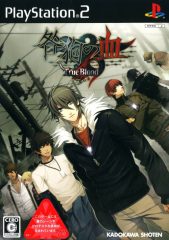
PS2 cover
In addition to drama CDs, manga, light novels, and anime adaptations, Togainureceived a PlayStation 2 port in 2008 called Togainu no Chi True Blood.It removesthe sex scenes and nudity and tones down the violence. The sex scenes are replaced by scenes of characters hugging or kissing. Shiki’s bad endings are replaced with less messed up ones, while Gunji and Kiriwar’s endings were removed entirely. The opening video was altered to include the new character Yukihito and uses a different song. The music in general was remixed, arguably with more interesting and layered arrangements. Several new voice actors were hired for this version, many of whom were carried over to the anime.
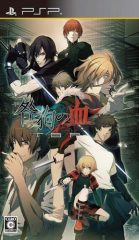
PSP cover
The PlayStation Portable version, dubbed True Blood Portable,was released December 23, 2010. This version is based on the PS2 port. The resolution is scaled down and offers a default widescreen that crops the character art and backdrops, though you can revert it to 4:3 aspect ratio with the select button.
Screenshot Comparisons
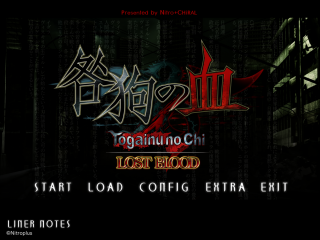
PC title screen
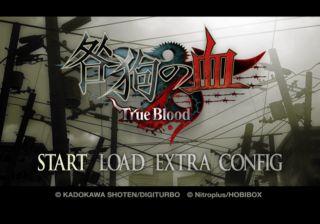
PS2 title screen
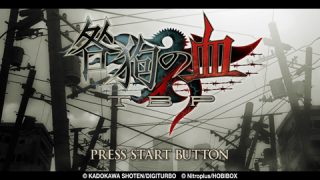
PSP title screen
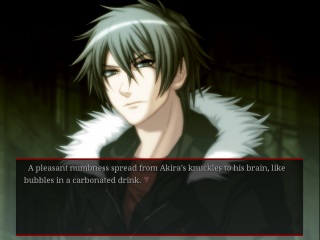
PC Akira
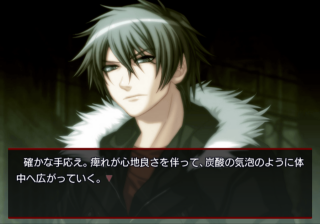
PS2 Akira
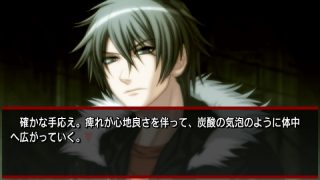
PSP Akira
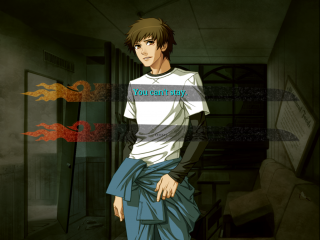
PC Keisuke
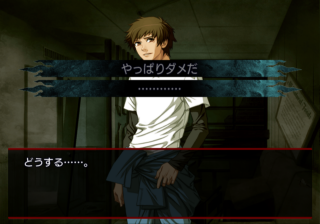
PS2 Keisuke
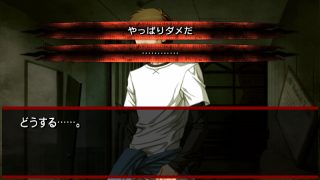
PSP Keisuke
